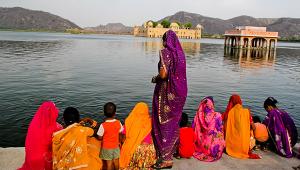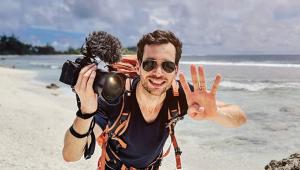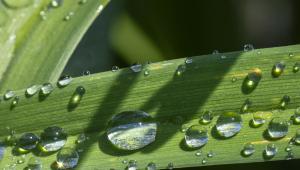When Disaster Strikes: How Photojournalists Balance Documenting Scenes Of Tragedy & Destruction with Running a Business

The photography of natural disasters and human tragedy—from earthquakes to suicide bombers—is an area of photojournalism filled with challenges. Photojournalists often face both physical and emotional obstacles but still need to keep a cool head and continue capturing the images. While their photos will tell the story of the event, photographers have their own personal stories to tell as well. The accounts told here are mostly about business but also touch on the heart of why someone takes on this area of photography and keeps going despite the emotional toll. We discuss issues of privacy and model releases, working at a disaster scene, what agencies to coordinate with, handling injury and trauma, and the pros and cons of pursuing this work.
Many thanks to my patient and considerate contributing photographers: Eduardo Munoz Alvarez, VIEWpress; Ron Haviv, VII Photo; Nadav Neuhaus; David Snyder; and Mark Wilson. Special thanks must be given to Roger Ressmeyer, Visions of Tomorrow Foundation, for his help with this article. (All of the websites are listed at the end of the article.)

Shutterbug: What exactly drew you into your first work in this area of photography? It’s not something usually studied in photography school!
David Snyder: I first started shooting natural disasters and conflict zones when I began working for a Baltimore-based non-governmental organization (NGO) called Catholic Relief Services. My background is actually in writing and I worked for their communications department. Photography was very useful for helping the agency to better illustrate its publications and website, so I was encouraged to take photos. Eventually I was hired to their Emergency Response Team, a global response team based in Africa, and that’s when I really began to cover many natural disasters to which the agency was responding.
Eduardo Munoz Alvarez: What drew me into this photography was the feeling that you are alive in just that moment that you know you could die. My first assignment was during a bank robbery and the robbers were holding some hostage with explosives. During those hours everything looked tense and though the robbers tried to blow up the explosive, it didn’t work. After a few hours, the police negotiated with them and everyone returned home scared but safe.
Mark Wilson: It was the challenge of capturing the emotions of people affected by difficult situations. I bought my first camera (a Pentax K1000) from money earned delivering the Detroit Free Press when I was 13 years old. I was and am into art (drawing and painting) so the disciplines blended. Photography helped my evolution as an artist and vice versa.
Ron Haviv: My first foreign trip was to cover elections in Panama. I took a photograph of the vice president elect being beaten by a paramilitary that wound up on the cover of all three newsweeklies: Time, US News, and Newsweek. Then when the United States invaded Panama, President George H.W. Bush spoke about the photograph as one of the reasons why the US was invading Panama. I knew then that to be a photographer and have the work inform and be part of the conversation was something I wanted to do.
Nadav Neuhaus: It was natural for me to be drawn to this kind of photography because I was born in Israel, a country that is constantly at war. My first job as a professional photographer was working at a local newspaper and my first encounter covering the conflict was a suicide bombing in Jerusalem. I was working for the newspaper Yediot Aharonot and, like most daily news photographers, I slept with a police scanner next to the bed. I was jolted out of sleep at 7 a.m. to the sound of a policeman shouting on the scanner that a bus had exploded. I will never forget the sound of his screaming. Within minutes I was out of bed and already on my motorbike with all my gear and still listening to the scanner to find out where the bombing had happened. I realized it was only a few minutes from my house and arrived at the same time as the first ambulance. When I arrived, I expected to hear screaming and crying. But it was the opposite. It was silent. Just the smell of burning flesh and petrol that hits you. It was a smell that I would come to recognize covering a wave of suicide bombings in Jerusalem and Tel Aviv. The strange thing about that day is that I don’t remember a thing about the first 20 minutes I was shooting on the scene. It was only later, when I got my negatives back from the paper, that I realized what I had shot. The next day, the pictures were on the front page.


SB: Do you ever face issues of privacy rights and model releases and how have you handled them? What government or NGO agencies must you coordinate with?
Eduardo Munoz Alvarez: When you work as a photojournalist you must face a lot of privacy rights with the content of your images. Also, sometimes the NGOs or the government may want to control the quality of the images to be published so you must find a way to work with them and show the audience what’s going on based on your assignment.
Ron Haviv: Privacy rights are dealt with on the ground and are up to my understanding of the situation. If people don’t want their photograph taken then I will absolutely not do so unless they are committing a crime or a human rights violation. Coordination with NGOs or government agencies depend completely on the situation at hand. There are no set rules nor any governing principles that the work is being censored by people around you.
Nadav Neuhaus: Usually, when working as a journalist in a conflict area or a situation that is dangerous, you would not stop to secure model releases. But the issue of privacy is something that we are always thinking about, like when you are shooting in a hospital, or if there are concerns about revealing private information or someone’s identity. In cases like that you have to think more like a fellow human being than like a photojournalist. It’s a balancing act. In an emergency situation like a natural disaster, or a war zone, working with NGOs that have been on the ground for a long time can be a mutually beneficial relationship. They might help you access people and places you might never have encountered. It’s not always the same with the government. In many cases, you are trying not to cross paths with any government agencies, because it will usually lead to restrictions on what you can do. In conflict areas, you are often stopped by military forces, opposition forces, or both. You need to be careful because, despite the chaos, you are probably breaking laws. That said, you can’t be so careful that it stops you from getting the story.
David Snyder: Fortunately, I’ve never faced any issues of privacy rights with the work that I do. Obviously, there are a lot of sensitivities around shooting photos of people at times in their life when things are at their worst, and I am always extremely sensitive to that. I do work for some agencies that require written release forms of those I photograph, but for most simply explaining who I am and what the photos are for is enough, especially since the photos are being used only editorially.
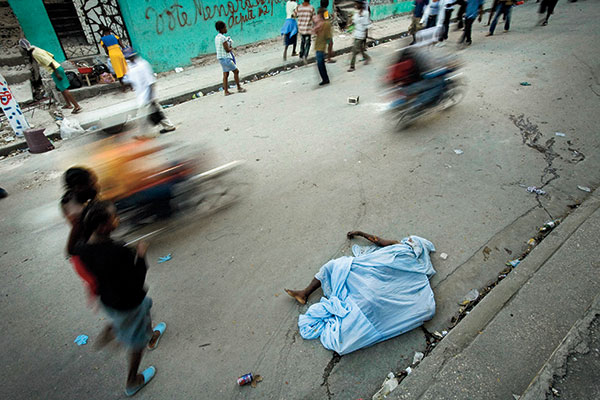
SB: How do you see your business model evolving in the next few years?
Ron Haviv: I am a co-founder of the VII Photo agency. We are a photographer-owned agency that distributes and represents our work around the world. The photo business is evolving in many different ways. The most prevalent is that due to social media as individual photographers we are moving from content suppliers to traditional media to being our own publishers. I expect this to continue and to ensure that work that has a visual voice and story to tell will rise above all the other imagery that exists.
Eduardo Munoz Alvarez: I’ve been a freelance photographer during the last 15 years, most of the time with the news agency Reuters in four different countries. I am also running a photo agency called VIEWpress, and we try to connect with other small agencies to form a network to promote our work straight to the clients interested in the specific material we are producing. I see my company growing every day, all thanks to the social media, which is getting stronger all the time.
David Snyder: Most of my income is generated from day rates for the clients with whom I work. I do occasionally sell images to other NGOs that use them for annual reports, websites, and other publications.
Nadav Neuhaus: I believe in the importance of personal contacts. Every photographer needs to build a portfolio, but that’s just the first step. You have to be a shameless self-promoter, making calls, sending e-mails, and setting up appointments with editors. Once you get a meeting, you can’t just show your pictures. You’re also selling yourself and your ability to come up with good ideas for a story. Most of my clients are magazines in the US and Europe, like Stern magazine (Germany), the Independent on Sunday (Britain), Le Figaro (France), and National Geographic (US). A photographer used to be able to depend on their agency to bring in work and sell images, but it’s not the same anymore. No one is going to do for you what you won’t do for yourself. The editorial market is struggling these days. As a freelancer, I am not chasing news just to get the news, because then I am competing with too many others. I always look for a story that is related to a news event but offers a different angle.

SB: What was your most meaningful or emotional photo shoot? Have you experienced any residual post-traumatic stress (PTSD) or physical injury?
Nadav Neuhaus: I can’t point to any one image or story that is the most meaningful or emotional. Every story scars you in some way. I always tell people that what I see and feel when I’m in the field isn’t like the dirt on your clothes—you can’t throw them in the laundry and wash it all away. It stays with you and becomes part of you. And the more experiences you have, the more it builds. Certainly every journalist who has covered conflict or disaster carries some difficult memories. For me, what stands out is the realization that at some point I stopped counting the number of bodies I had seen. It had become so much a part of my daily job. It seems to me that the definition of PTSD has widened considerably in recent years because you carry these memories with you. Every person reacts differently and copes in their own way. For myself, I usually talk about the things I’ve seen and felt with my girlfriend and close friends. It is enough to talk it through.
Ron Haviv: Due to the work I have done over the last 25 years with conflict and human rights abuses, it is difficult to choose the most meaningful or emotional shoot. I hope that all the stories that I have done have had some meaning and that the audience has had an emotional reaction to it. While I have been fortunate enough not to be seriously injured, I have had PTSD from some of my experiences. It is something that many of my colleagues go through and the key is to understand what is happening and how to treat it. Organizations like the Ochberg Society help journalists like myself in the field and when we return home.
Mark Wilson: The Berrendo Middle School shooting in Roswell, New Mexico, in early 2014 was pretty powerful. And funerals for soldiers killed in action are always emotional. It is important to lay low and stay back while capturing the emotions of the people involved and to keep your own emotions in check. I have been shot twice by SWAT teams firing tear gas rounds and rubber bullets, once while covering a riot in Little Rock and once during a SWAT training session in New Mexico. The riot broke out during a PETA protest that got out of hand and I was shot in the back as the police moved in to quell the situation. During the SWAT training session I was on hand to observe and photograph when a rookie mistook me for an active player. I was shot three times in the left shoulder with rubber bullets, which basically broke the skin. I was also assaulted several times, once while covering the aftermath of a drive-by shooting and once while photographing a car wreck.
Eduardo Munoz Alvarez: It was the Haiti earthquake in 2010; I experienced some residual post-traumatic stress. The death of 300,000 people in a country without electricity and potable water…to see people die on the streets and you cannot do anything to help. It was one of my hardest assignments, even worse than my trips to Iraq, where I saw another kind of suffering in the face of people.
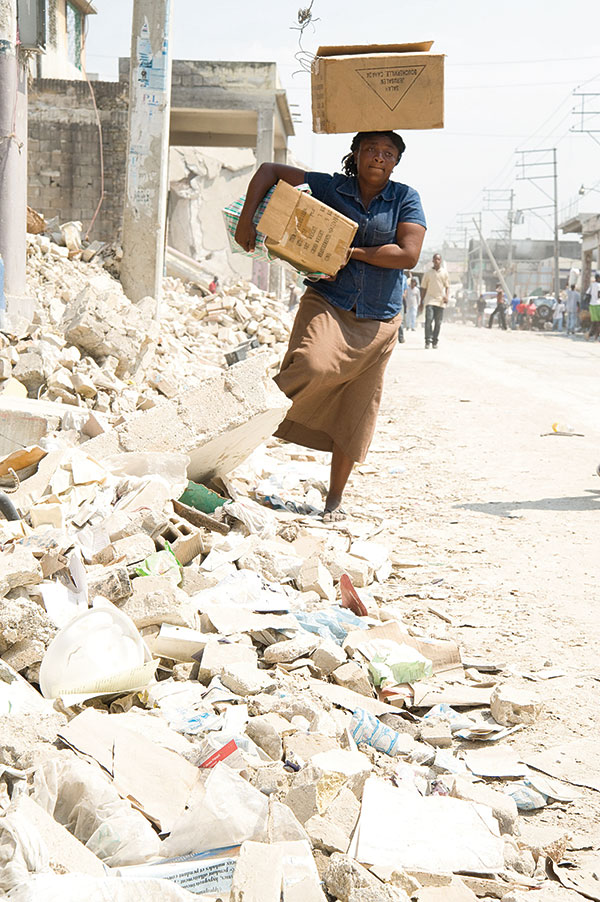
SB: As a result of this career choice, what is your life like and how does it affect your family and loved ones?
David Snyder: This lifestyle, of always being on call for a natural disaster or some other rapid onset emergency, is very taxing, especially for those with families. Because I am single and have no kids, I have the flexibility to do this job and be able to drop everything and fly to foreign countries on short notice. But I think it would be extremely hard to do with a family.
Ron Haviv: It is and has been difficult for my family a number of times. Dangerous situations and being taken prisoner have resulted in worrying them. I have been very fortunate to have unlimited support from my family and loved ones to continue doing the work that I feel is so important.
Eduardo Munoz Alvarez: This career is your choice and you must take the responsibility to do it. This profession “photojournalism” is not like being a fancy boy hanging around with a camera on your neck. Photojournalism is a profession where you need to do everything for the audience without waiting for something in return. You do it because you feel you are helping society to understand what’s going on in places where chaos makes everything confusing.
Nadav Neuhaus: Photography is not just a job, or a skill. It’s a way of living. I never imagined that I would travel around the world and see the things I’ve seen or that I would live in another country. But there are drawbacks. My mother has spent a lot of time worrying about my safety. At one time I think she hoped I would move on to another type of work, but after 20 years in this job, she realizes it will not change. And because I am always moving, sometimes my girlfriend and I don’t see each other for a long time. Usually, when I’m in the field, I don’t have a chance to call. As an example, after the earthquake in Haiti, I left within hours of the earthquake and I didn’t call home for the first week. There was a lot of traumatic imagery and I don’t think I spoke with her about what I saw there until I had already been working in Haiti for months. Usually, she doesn’t ask, because she knows it will come on its own. But there were a few times, when I was in Haiti, that she asked me about what I had seen, and I said it wasn’t the right time. I was holding those memories and emotions back, until I could take the time to process it because I wanted to keep working and document what I saw.
What I encountered and photographed there was the beginning of a difficult journey that would bring me back to the island several times over the next few years. As the five-year anniversary of the earthquake nears, photographer Carlos Cazalis and I will be posting images on Instagram. These recall the devastation and trauma of the earthquake as well as the countless moments of passion, crisis, spirituality, and redemption that marked the many months in its aftermath. i24 News will support my travel to Haiti for this “Haiti year zero” project and personal stories that were born out of this cataclysmic event will be posted at #haitiyearzero.

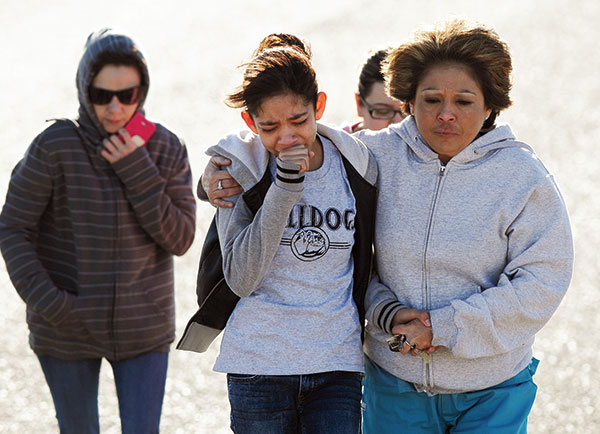
SB: What are the lessons you have learned from working at a disaster scene that you can share with someone interested in this kind of photography?
Mark Wilson: Working any highly sensitive photo shoot—whether it be a disaster, fatality car wreck, drive-by or school shooting—requires the photographer to become invisible and discreet. Avoid becoming a distraction.
Eduardo Munoz Alvarez: The most important lesson is the respect for the people you are photographing and the respect for the audience who are waiting for your best and honest image.
David Snyder: I find it difficult to offer advice to those interested in working in this field of photography, because so much of the work comes down to the type of individual you are. For sure you need qualities of flexibility, compassion, a passion for travel, and the ability to work well under stress. But those are just part of the job. It’s difficult to know who can handle the rigors of the work until they are actually in a place where a natural disaster has occurred, and have been there for some time. Each one is different in scope and scale and even in potential danger—in earthquake responses when tremors can still bring down damaged buildings or in flood zones where finding clean water can be a difficulty. So I always say, if you have an interest and can get to the field, try it and see how it suits you. You will know quickly enough.
Ron Haviv: When working in a disaster scene, one of the most important things is to be able to represent the situation in an accessible and relatable way. Your actions with the people on the ground should always be one of respect and understanding. Foremost in my work I have found the responsibility of being the voice of the people I am photographing and the eyes of an audience that cannot be there.
Nadav Neuhaus: First, and most important, is to always be afraid. Fear can be paralyzing or it can be a survival tool, sharpening your instincts. You have to learn to use the fear to keep you alive. Second, it’s important to know how you are going to get in, but it is even more important to know how you are going to get out. Learn as much about your subject and the place before you land. Third, there is no right side to any conflict. There is always another side to every story. And finally, don’t judge. Don’t judge your subjects—or your colleagues—for how they react to a chaotic and traumatic situation.
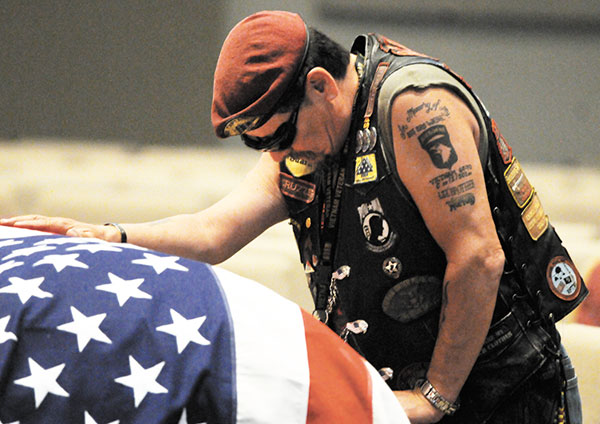
Web Resources
Eduardo Munoz Alvarez: http://instagram.com/eduardomunnoz, www.viewpress.org
Ron Haviv: www.ronhaviv.com, www.viiphoto.com
Nadav Neuhaus: www.nadavneuhaus.com, www.i24news.tv/en/
David Snyder: www.dsnyderphotography.com
Mark Wilson: markwilsonphoto.com
Ochberg Society: www.ochbergsociety.org
Visions of Tomorrow Foundation: www.visionsoftomorrow.org
- Log in or register to post comments













